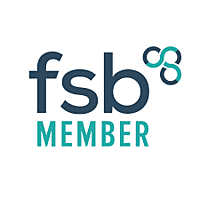I used to put things off!
Not because I couldn’t be bothered — but because I didn’t want to do the thing. If I’m honest, it was usually something that was going to be uncomfortable, boring or awkward. Chasing a quote. Making a difficult call. Starting something I didn’t feel 100% ready for.
So I’d tell myself things like:
“I’m thinking it through.”
“I’ll do it when the time’s right.”
“that other thing is better to do now”
I would get distracted by other things really easily.
But it wasn’t strategy. It was avoidance. I was lying to myself to dodge discomfort.
Procrastination Isn’t Harmless — It’s a Slow-Drip Killer
We act like procrastination is just a time issue — it’s not. It’s emotional. It’s fear.
You’re not avoiding the task because it’s hard. You’re avoiding how it’ll make you feel — exposed, judged, or not good enough.
And while you avoid it, something worse builds: guilt. That quiet voice that whispers:
“You still haven’t done that thing.”
Every delay chips away at your self-respect. Every avoidance builds stress. And it doesn’t just affect your productivity — it affects how people see you.
I knew it was bad when I stopped trusting myself to follow through.
In The Fear Bubble, Ant Middleton wrote:
“Fear is a reaction. Courage is a decision. And the fear bubble? It disappears the moment you take action.”
He’s right. I didn’t think my way out of fear — I had to move.
My Turning Point: When I Realised Life Wasn’t Going to Fix Itself
There wasn’t one dramatic moment — just a slow realisation that I was stuck.
Stuck in what Paul Mort calls the “mental masturbation loop” — thinking, planning, talking, but never actually doing.
He said:
“If you’re not where you want to be, it’s not because you don’t know what to do. It’s because you’re choosing not to move.”
That hit hard. Because I did know what needed doing. I just didn’t want to feel the discomfort that came with action.
And it wasn’t just me paying the price.
- At home, I was distracted — physically there but mentally elsewhere.
- At work, clients and teammates were left waiting on me.
- In my own head, I was fed up of breaking promises to myself.
When I Finally Took Action — And Why It Stuck This Time
Here’s the truth: nothing changed until I started doing the uncomfortable stuff anyway.
No perfect mood. No magic moment. Just action.
Yes — I used a planner.
Yes — it helped.
Not because the planner was magic. But because it gave me a structure to stop drowning in my own thoughts. Something to anchor me when the “I’ll do it later” voice crept in. I spent time developing my own version from the one I followed.
If you want to try what worked for me, you can grab the 28-Day Komplete Metanoia Planner on Amazon.
Here’s what I changed:
- When I caught myself saying “later,” I did it now.
- When something felt uncomfortable, I tackled it before it grew arms and legs.
- When I got anxious, I acted anyway — because waiting made it worse.
I didn’t wait to feel ready. I built momentum by moving.
And that’s when everything started to shift.
What Changed — And Why It Feels So Different Now
Once I built consistency into my daily action, things got lighter:
- Clients replied with “Thanks for getting back so fast.”
- My team stopped chasing me and started trusting me.
- At home, I was more present — no longer mentally writing to-do lists during dinner.
- My stress dropped because my actions were catching up to my intentions.
I felt capable again.
And that’s exactly what David Goggins talks about in Can’t Hurt Me:
“You have to build calluses on your mind, just like you build calluses on your hands. You do that through pain and discomfort.”
He’s not wrong. Avoiding discomfort weakens you. Facing it builds strength.
You can’t avoid pain — but you can grow from it.
Business Doesn’t Wait for You
In business development, responsiveness is everything. And here is the really weird thing, in business development I wasn’t as bad at this as I was in life. I could catch myself doing it and would deal with it.
Every delay creates doubt. If you don’t send the quote, someone else already did. If you leave a client hanging, they assume you’re not interested. If you stall a decision, your team loses momentum.
Sir Alex Ferguson said:
“If you give in once, you’ll give in twice.”
Hesitation becomes habit. And business doesn’t reward hesitation — it rewards decisive, consistent action.
Your Delay Becomes Someone Else’s Stress
Let’s be blunt.
When you delay, someone else pays for it.
- That client waiting on a decision
- That team member stuck in limbo
- That partner covering for what you said you’d do
- That friend wondering why you never text back
Your silence creates confusion. Your inaction creates anxiety. Your delay becomes someone else’s stress.
Steven Bartlett summed it up perfectly:
“We procrastinate because we want to make perfect decisions in a world where perfect decisions only exist in hindsight.”
They don’t need you to be perfect.
They need you to show up.
The Real Impact — Not Just for Me, But for Everyone Around Me
Before I made these changes, I was constantly behind — not just in tasks, but in my own head.
I’d wake up with anxiety. I’d go to sleep with guilt.
I was tense, irritable, and hard to be around.
Since I stopped hiding and started acting:
- I’ve got clarity.
- I’ve got more time for the people I care about.
- I’ve rebuilt trust — with others, but also with myself.
Even Tyson Fury, in his rawest interviews, says:
“You’ve got to stop running. As soon as you face it, things get lighter.”
He’s right. Running makes it worse. Action sets you free.
Final Thought: Procrastination Is a Smooth-Talking Liar
It tells you you’ll feel more motivated tomorrow. That you need more time. That you’re better off waiting.
Lies. Every single one.
Action is the cure.
Structure helps.
Consistency transforms you.
So whether it’s a planner, a phone call, a decision, or a tough conversation — don’t wait.
Move. Now.


